|
Delco-Remy in
World War Two
The D-Day Normandy Invasion
June 6, 1944
This page added June
6, 2014.
This page commemorates the 70th
anniversary of the Normandy Invasion and the important story of the
Delco-Remy Division of General Motors participation in this historic
event.
This page updated with
additional photos and information on May 1, 2020.
Author's note: This page was added to the website in June 4,
2014, 75 years to the day of the landing at Normandy, France by
American, British, Canadian and French forces. The original
information from 2014 was based on information noted in "Our War
Job," published by Delco-Remy in 1944. Since 2014, I have
learned considerably more from other research of other World War Two-era
companies about the military equipment in which Delco-Remy products were
utilized. Delco-Remy had considerable presence at Normandy with
its products in landing craft, motor torpedo boats, aircraft, armored
vehicles, and trucks. DDJ 5-1-2020
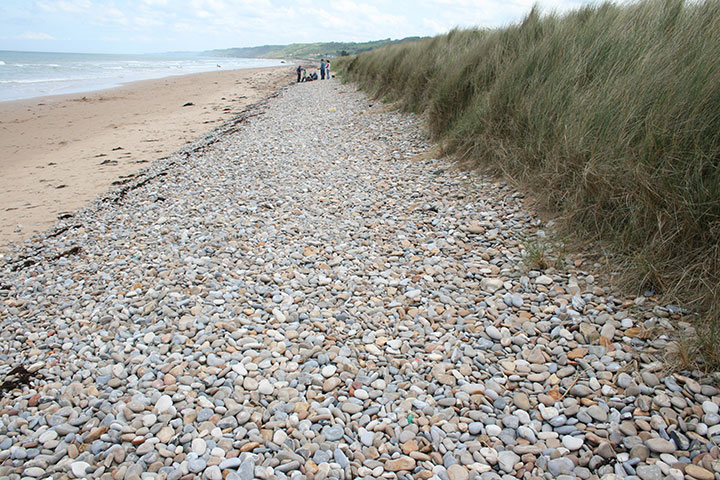
This is the east end of a quiet Omaha Beach
in May of 2008. In photos from June 6, 1944 the large pebbles are
shown many times as soldiers tried to take cover on the beaches from the
German defending fire from the heights above. Author's photo.
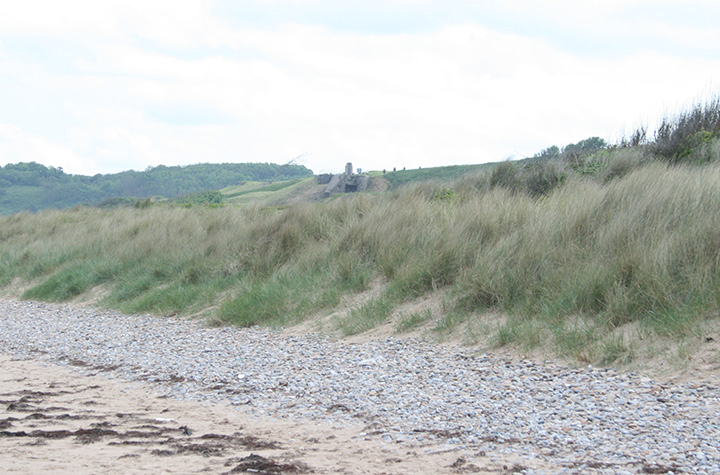
Note the bunker for a 75mm German gun in the
center of the photo. Behind it are several US Memorials.
Author's photo.
Early in the morning darkness of June 6, 1944,
the Allied invasion force
arrived off the Normandy beaches. With a 6:30 AM scheduled
invasion start time and the first wave of landing craft to arrive at
the beaches, much had to be done. Out in front of the two American
beaches, Omaha and Utah, small wooden landing craft 36-feet long were
lowered over the sides of the large transport ships and placed into the water.
The U.S. Coast Guard coxswains on each of the small craft reached down
in the darkness and pushed a button. The 225 hp
diesel engines in them came to life! Each and every one of them was
started by Delco-Remy cranking motor! 1,089 times this happened
throughout the fleet in the darkness on that fateful morning.
Delco-Remy had just started the Normandy Invasion!
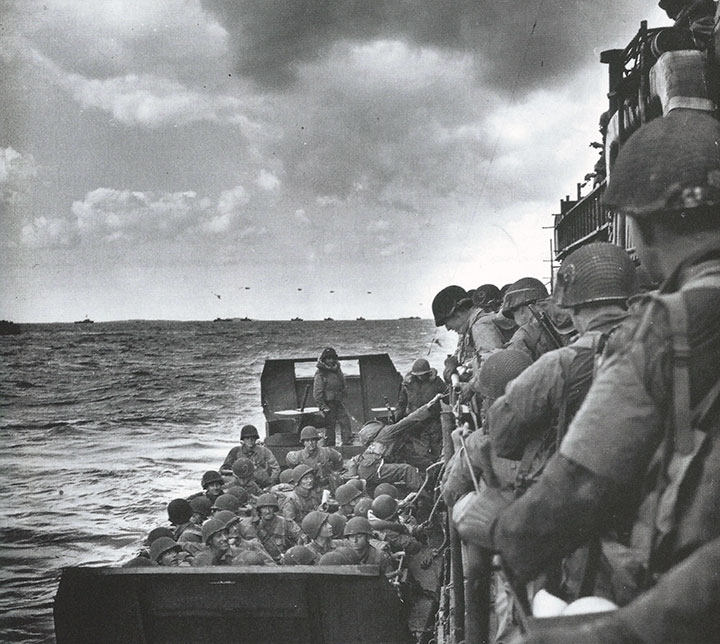
A 32-man infantry platoon loads into
the 36-foot long wooden landing craft for the trip onto the beach.
One of the coast guard men is trying to hold the Landing Craft,
Vehicle, Personnel (LCVP) fast to
the transport while one of the soldiers tries to get into the craft.
This is later in the day, as it is now light. It is the loading of one
of the many waves that came in after the first. The coast guard
crews, if they survived the initial landing, kept coming back again all
day with
more loads. Of the 1,089 LCVPs that started the day, 81 were
lost in the ensuing combat. It was not an easy day for the LCVP
crews and their passengers!
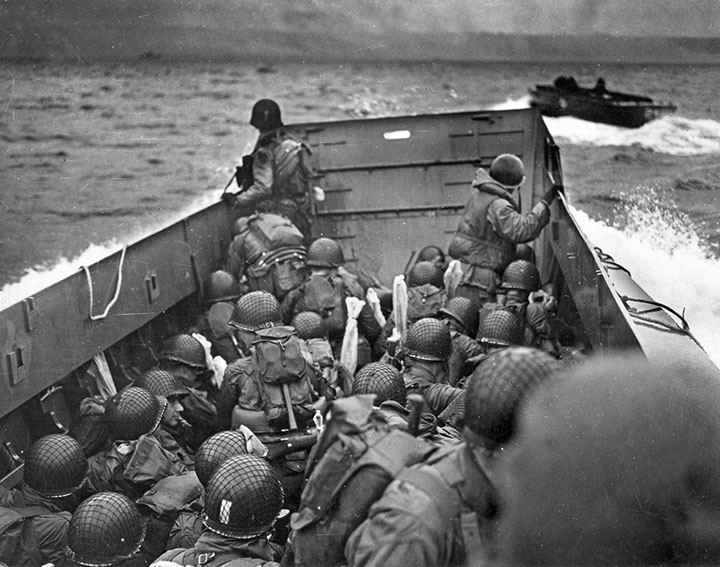
This iconic photo shows a group of anxious young GI's landing on Omaha
beach on D-Day in an LCVP. The LCVPs were powered by Gray Marine modified GM Detroit Diesel 6-71
engines. Each 6-71 engine had a Delco-Remy starter, DC generator,
pistons, and a blower. It was a rough ride
to the beach. The beach did not look as peaceful then as when I was there in
2008.
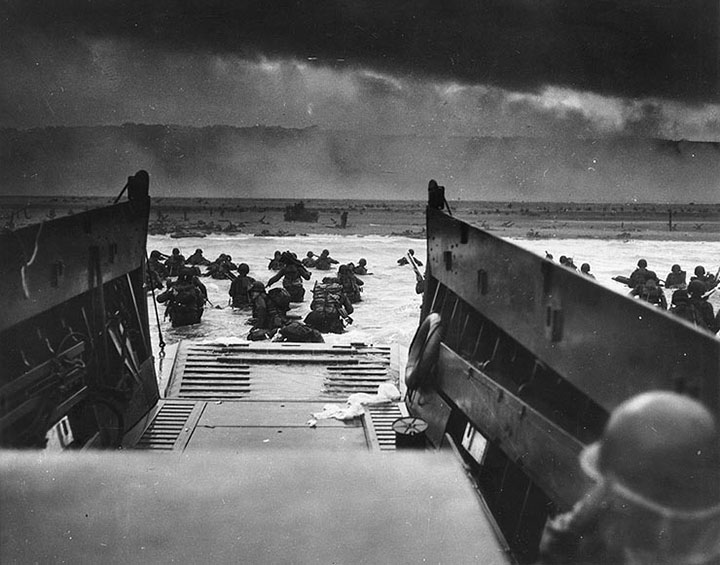
Brave beyond description!
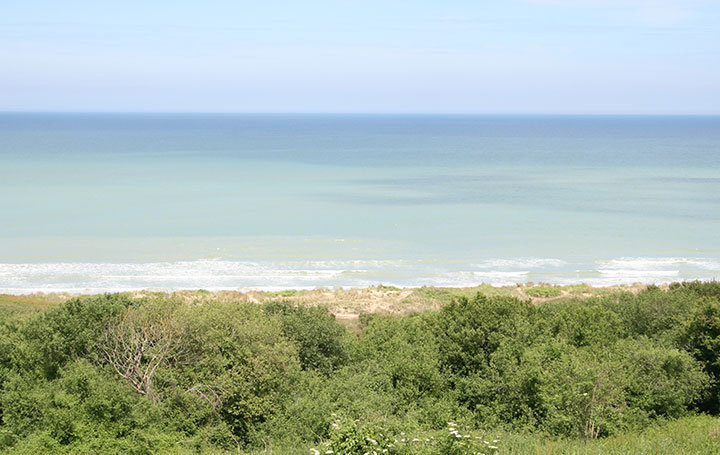
Advantage to the defenders on Omaha Beach. It doesn't
take a military genius to figure out that when the 1st Division landed
on the beach below, they walked directly into the Jaws of Hell.
That's if they even got to the beach, as the defenders had a clear field
of fire into the landing craft as they approached the beach. One
would have to assume that the Germans had cleared away all of the trees
and brush that would provide cover for an invading force once it had
landed. Author's
photo.
Author's note: The difficulties
of the American soldiers' landing on Omaha Beach are legendary.
The story has been told in numerous books and movies since World War
Two. The most recent and most graphic of the movies was Steven
Spielberg's "Saving Private Ryan." I read many accounts of the
landing at Omaha Beach, and saw "Saving Private Ryan." However, it
wasn't until I stood at the American Cemetery at Normandy and looked
down at the on the beach that I fully realized why this was such a
problem for the landing forces. Words in books and simulated
battles scenes in movies do not capture the true scope of why events
happened as they did here. This was a disaster waiting to happen,
and it did. Of all the historic battlefields I have visited over
the years, this one has had the most long lasting impact on me. If
you, the reader, get nothing more from this website, I hope you gain a
better understanding of the difficulties of young American soldiers on
Omaha Beach on June 6, 1944. DDJ 5-1-2020.
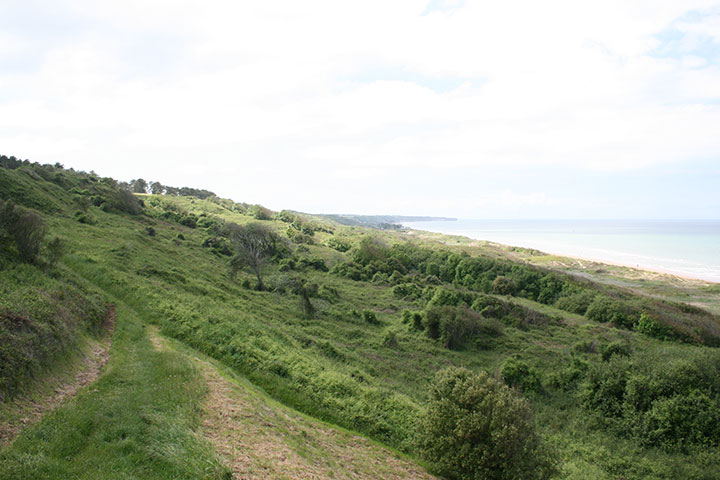
There were excellent fields of fire. The ability of the
German defenders to see up and down the coast made it tough going for
members of the Big Red 1 to advance up the hill. Author's
photo.
Delco-Remy on the sea at Normandy:
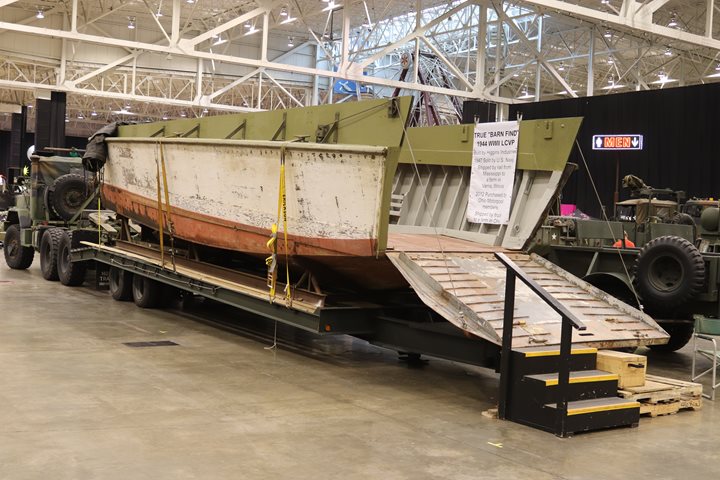
The Landing Craft, Vehicle, Personnel, or
LCVP. It is also known as the Higgins boat, after the company that
did the initial development on this type of landing craft. It was these
type of landing craft that made the initial landings on the beaches of
Normandy. This 1944 LCVP is one of only a couple of original
surviving LCVPs. The LCVPs at Normandy were powered by a Detroit Diesel 6-71 diesel engines
with Delco-Remy cranking motors, D-C generators, blowers, and pistons.
Author's photo added May 1, 2020.
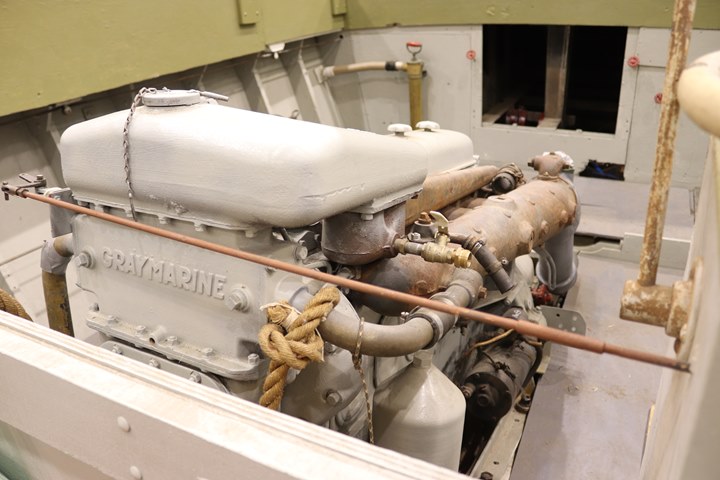
Gray Marine Motor Company of Detroit, MI
added the exchanger and coolant container along with some other
modifications and additions to make the 6-71 into a marine engine for use
in landing craft. Author's photo added May 1, 2020.
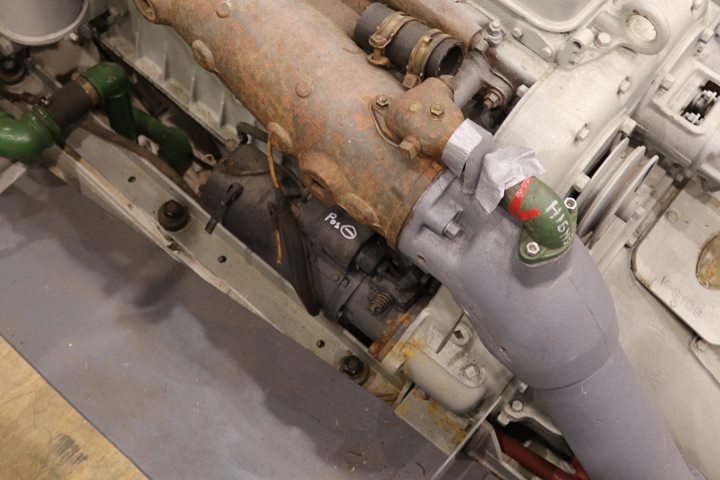
The Delco-Remy cranking motor and solenoid
can be seen in this photo. Delco-Remy cranking motors were the
motor of choice for U.S. Navy landing craft during World War Two.
The navy provided Delco-Remy with an unused former ammunition plant in
1944 at Kings Mill, OH, which was dedicated to producing landing craft
cranking motors. Author's photo added May 1, 2020.
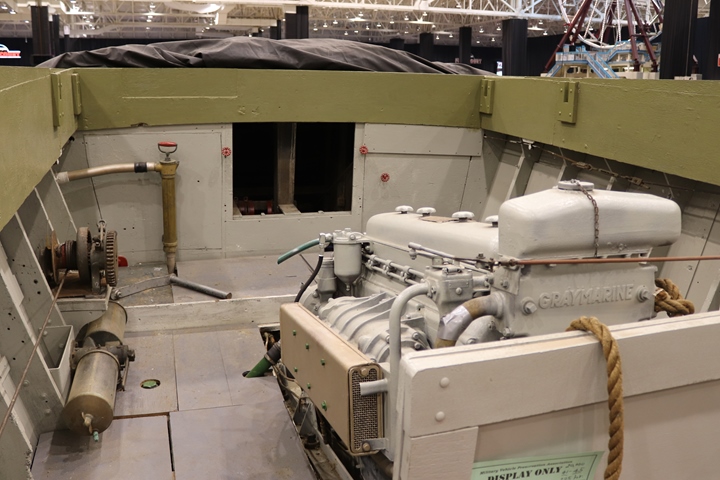
On the other side of the engine, the cooling
fins on the blower can be seen. Delco-Remy built the blowers for
Detroit Diesel during World War Two. Author's photo added May 1,
2020.
Delco-Remy cranking motors, D-C generators,
regulators, cast pistons, and blowers were used at Normandy in LCVPs,
LCMs, LCTs, LCIs and LSTs. There were 1,089 LCVPs, 835 LCTs, and 72
LCIs at Normandy. Half of the 233 LCTs, or 116, were powered by
Electro-Motive 12-567 engines with Delco-Remy cranking motors.
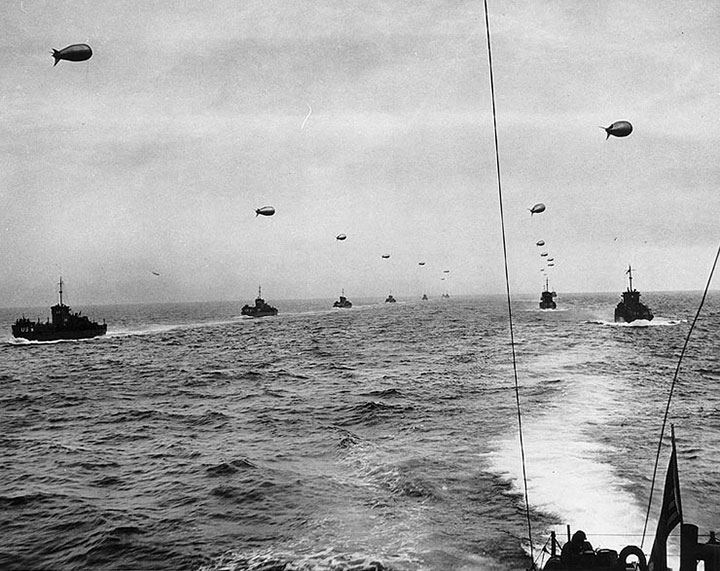
Each of these Landing Craft Infantry (Large)
or LCI(L) had a barrage balloon attached in route to the Normandy
beaches on D-Day. These were powered by eight of the same type
Gray/Detroit Diesel six-cylinder engines that powered the LCVPs.
However, four of the individual engines were combined into a quad
configuration connected to a single drive shaft. These two quad
engines then each drove a propeller. Delco-Remy would have
supplied the starters, DC generators, voltage regulators, blowers and
propeller controllers for the seventy-two LCI(L)s that took part in the invasion.
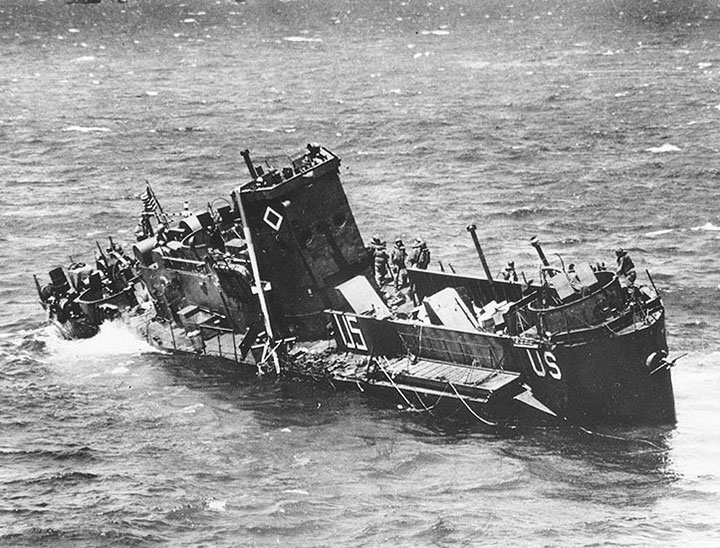
This LCI(L) is in trouble and is sinking
after taking a hit from German artillery fire on the beach. An LCI
could deliver an entire infantry company directly to the beaches.
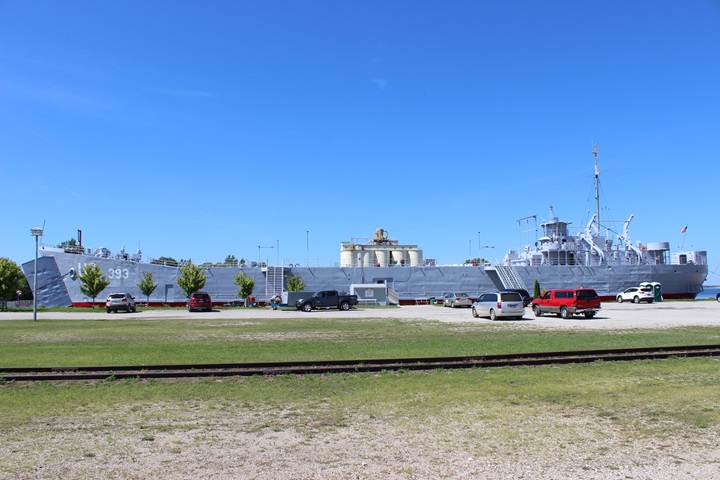
LST-393 made
30 round trips to Normandy bringing in tanks, tank destroyers,
artillery, supplies, and troops to the beaches. On its return trips
to England, it took wounded soldiers and German POWs. Author's
photo added May 1, 2020.
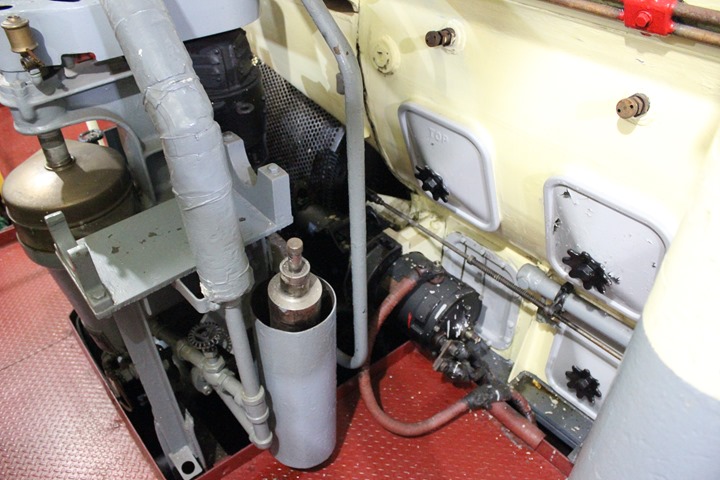
Both Electro-Motive 12-567 engines have 900
series cranking motors on them. Author's photo added May 1, 2020.
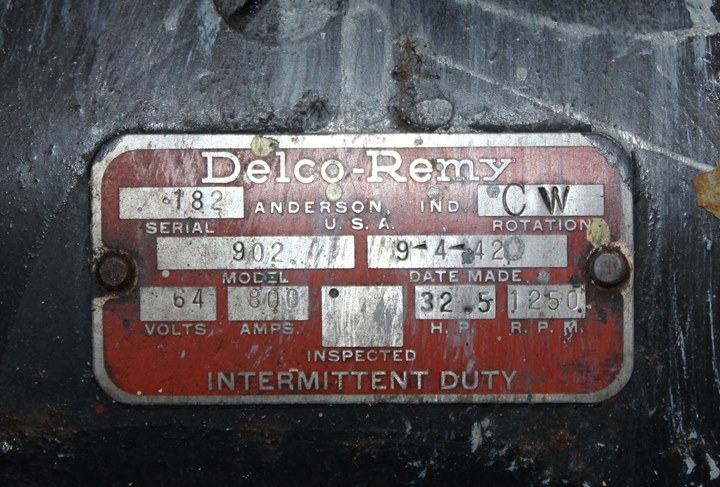
The Delco-Remy 902 cranking motor, built on
9-4-1942 was on LST-393. It is a Normandy veteran, having made the thirty round trips to Normandy. Author's photo added May 1, 2020.
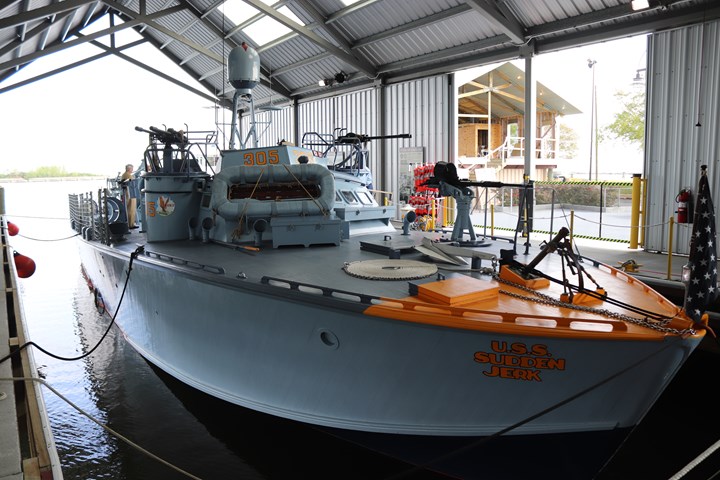
Among the many small boats at Normandy were
American PT boats, British motor torpedo boats and British motor guns
boats. These were all powered by Packard 4M2500 marine engines
with Delco-Remy electrical components. PT-305 is the only
surviving Higgins-built PT boat that saw service in World War Two.
While it served in the Mediterranean, it is representative of both the Elco
and Higgins PT boats that were part of the invasion. Each PT boat
had three 4M2500 engines. Author's photo added May 1, 2020.
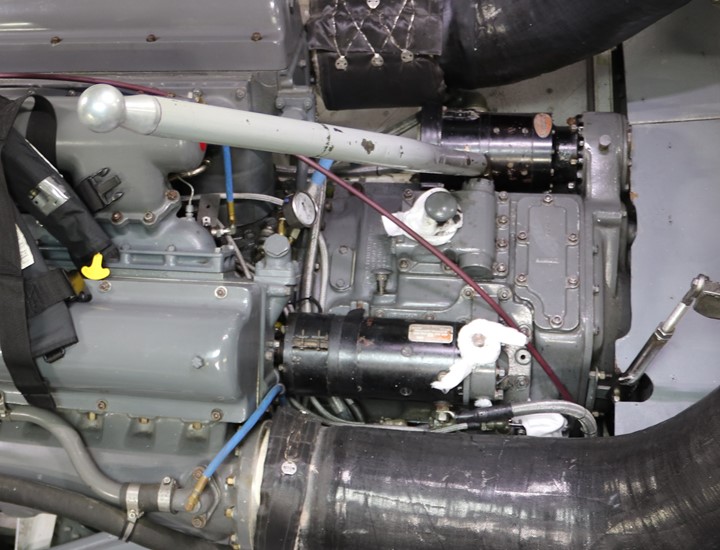
The Delco-Remy D-C generator at the top of
the page and the cranking motor in the middle can be seen on PT-305's
starboard engine. Delco-Remy carbon pile type voltage regulators
are mounted on a control panel in the engine room. Author's photo
added May 1, 2020.

The first display a visitor encounters when
entering John E. Kushner Restoration Pavilion at the National WWII
Museum in New Orleans, LA is this cutaway of a Packard 4M2500 marine
engine. Visitors from around
the world see the Packard cutaway with its prominently displayed D-R
cranking motor.
Author's photo added May 1, 2020.
Delco-Remy in the air at Normandy:
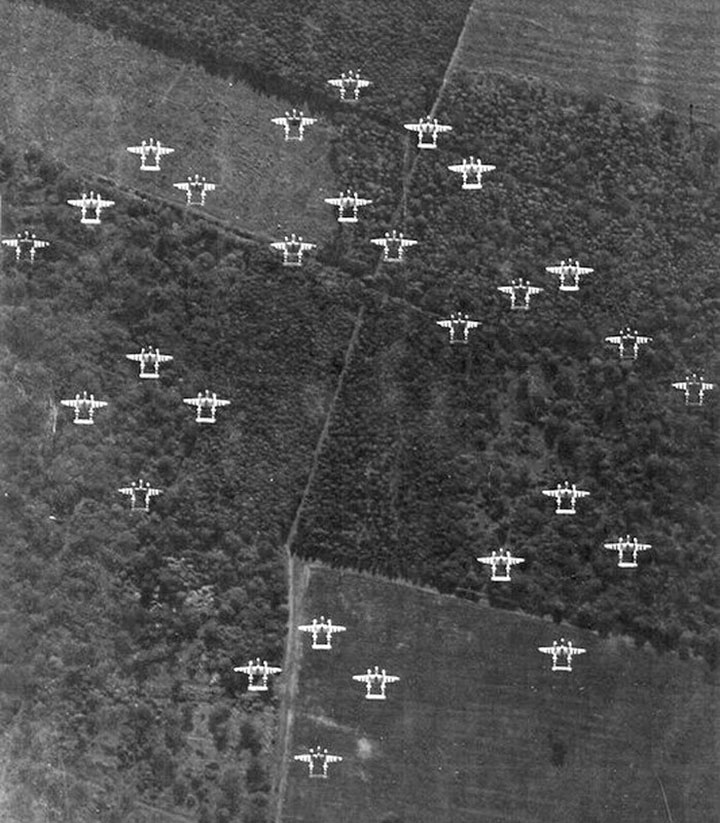
What a awe inspiring sight! Twenty-eight Lockheed P-38 Lightnings with invasion stripes flying over Normandy to support the
troops on the beach.
Delco-Remy was an important supplier of aluminum castings to the
Allison Division of General Motors that provided V-1710 engines
for the P-38. Plant 7 was built in 1940 specifically to produce
many of the castings Allison needed.
Plant 10 was constructed in 1941 to machine the castings to the
necessary tolerances before they were shipped to the Allison Plant in
Indianapolis, IN.
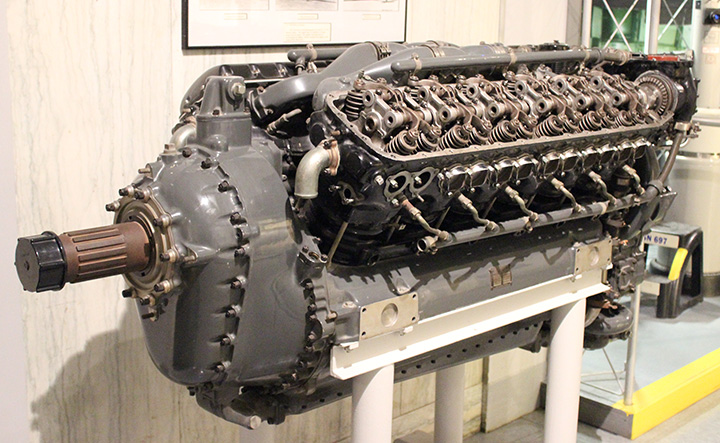
This Allison V-1710 is on display at the Indiana War Memorial in
downtown Indianapolis. The two nose house castings and the intake
manifolds on top of the engine were produced in DR Plant 7. The
same can be said for the heads that are painted black and the gray engine
block
below it. The valve cover that has been removed but is just
visible on opposite side was also a Delco-Remy casting. Many of
the unseen internal castings were also produced in Plant 7 and then
machined in Plant 10. Author's photo.
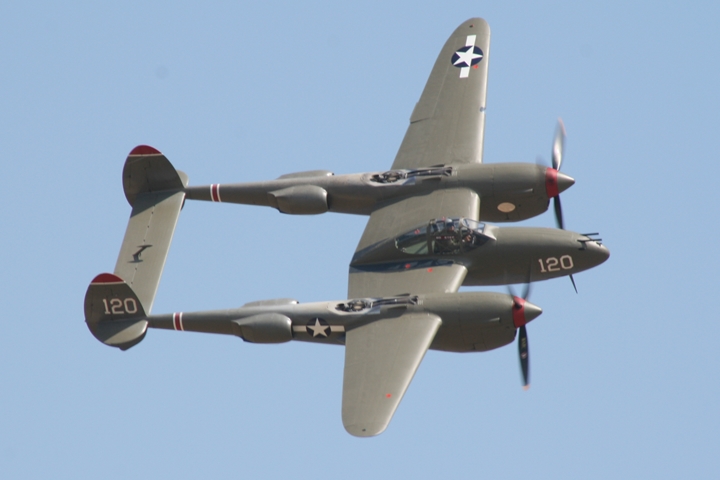
Author's photo added May 1, 2020.
Delco-Remy on land at Normandy:
Armored Vehicles - Delco-Remy had
various electrical components in many of the armored vehicles that
landed at Normandy and fought in the ensuing battles. Delco-Remy
also provided blowers for Detroit Diesel 6-71 engines used in M4A2
Sherman tanks and M10 Wolverine tank destroyers. In the case of
the M4A2 tank and M10 tank destroyer Delco-Remy was the exclusive
supplier of cranking motors, D-C generators, and voltage regulators.
The same is true of the Cadillac V-8 gasoline powered engine that was
used in the M5 and M5A1 Stuart light tanks. For tanks and armored
vehicles with Continental radial gasoline powered engines, Delco-Remy
was a non-exclusive supplier of electrical components.
Many of the armored vehicles supplied to
the British, Canadians, and French by Lend-Lease that participated at
Normandy had Delco-Remy
components. These vehicles are
included in the selection below.
Light Tanks:
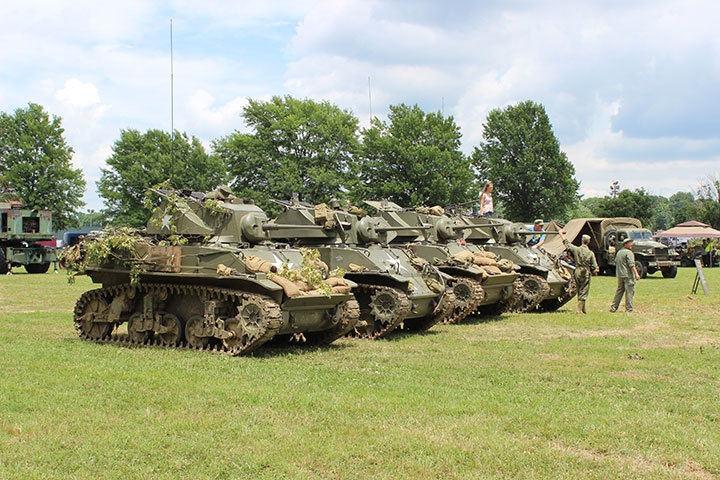
American, British, Canadian, and French forces all had the M5 and M5A1
Stuart light tank at Normandy.
Cadillac, Massey-Harris, and American Car and Foundry manufactured 8,884 M5 and
M5A1 Stuart tanks, built with two Cadillac V-8 engines.
Delco-Remy furnished 17,768 sets of generators, starters, ignition
coils, ignition distributors, and regulators for the tanks.
Author's photo added May 1, 2020.
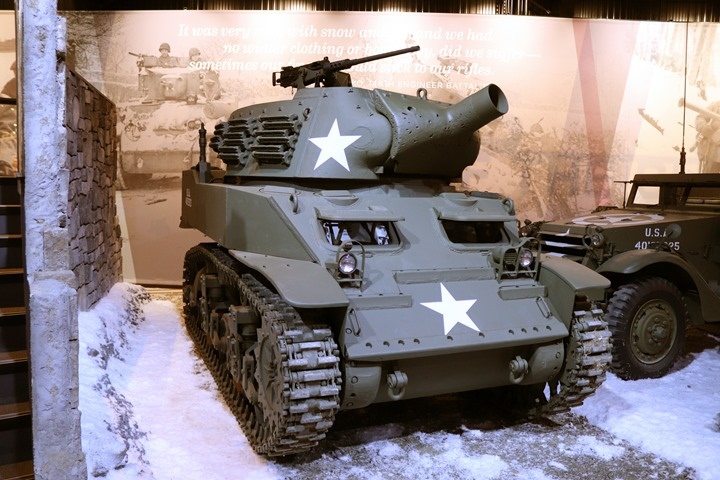
Cadillac also produced a 75mm howitzer
version of the M5 Stuart tank for the Allied Forces at Normandy.
It had the same two Cadillac V-8 engines with Delco-Remy components as
the M5 light tank. It was designated as the M8 75mm Gun
Carriage. Author's photo added May 1, 2020.
Medium Tanks: The American Army
at Normandy was equipped with the M4 and M4A1 Sherman tank, which was
powered by a Continental R-975 radial engine. Delco-Remy was a
non-exclusive supplier of cranking motors for this engine.
According to technical manual "TM 9-1825, War Department Technical
Manual, Ordnance Maintenance, Electrical Equipment, (Delco-Remy)" dated
12 January 1944, Delco-Remy provided six different model cranking motors
for radial engines. There is no specific mention of generators or
voltage regulators in the TM 9-1825. The R-925 used magnetos
instead of a distributor.
-fortbenning-2018-107w-1.jpg)
This is an Alco-built M4 Sherman tank,
Serial Number 3949, built in April 1943. It is similar to many M4 medium
tanks built by several companies that were used by American forces at Normandy. Author's photo added May 1, 2020.
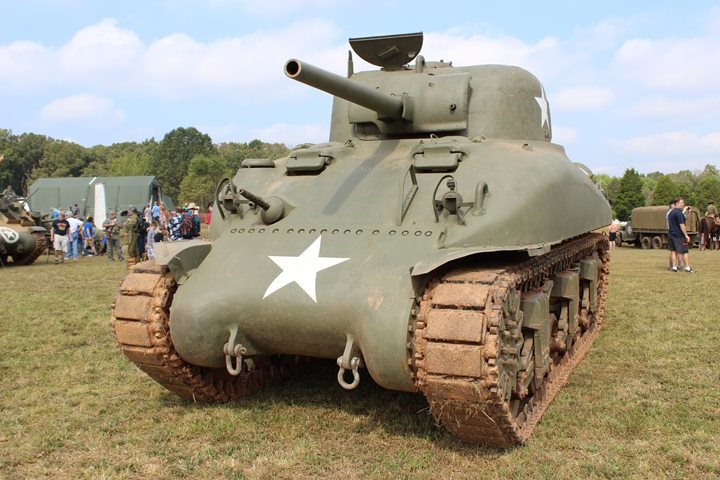
This M4A1 was built by Pressed Steel in July
1942, and had the same engine as the M4. The main difference was
that it
had a cast rather than welded hull. Author's photo added May 1,
2020.
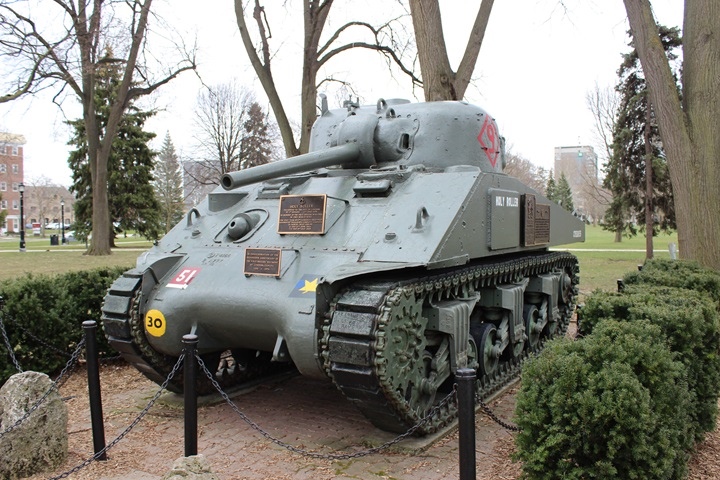
This Fisher Body-built M4A2 with two
Detroit Diesel 6-71 engines is a true war veteran. It is the
only tank that survived the war in operation with the 6th Canadian
Armored Regiment (1st Hussars). This tank landed at Normandy with
the Canadians and made it all the way through Europe. The Delco-Remy
components started it every morning and kept the tank supplied with
electrical power during operations. Very cool!
The M4A2 Sherman tank was used by America's
allies at Normandy.
Other Armored Vehicles:
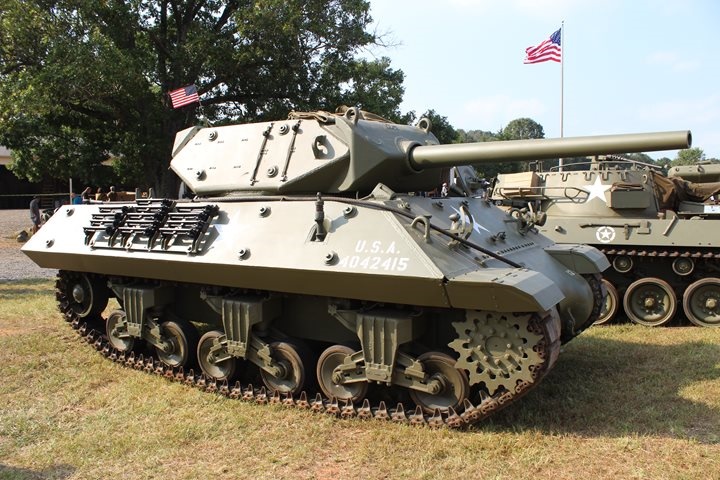
The Fisher Body-built M10 tank destroyer was
also powered by twin Detroit-Diesel engines with Delco-Remy components.
The M10 was not only used by the American Army at Normandy, but the
British, Canadians and French. Author's photo added May 1, 2020.
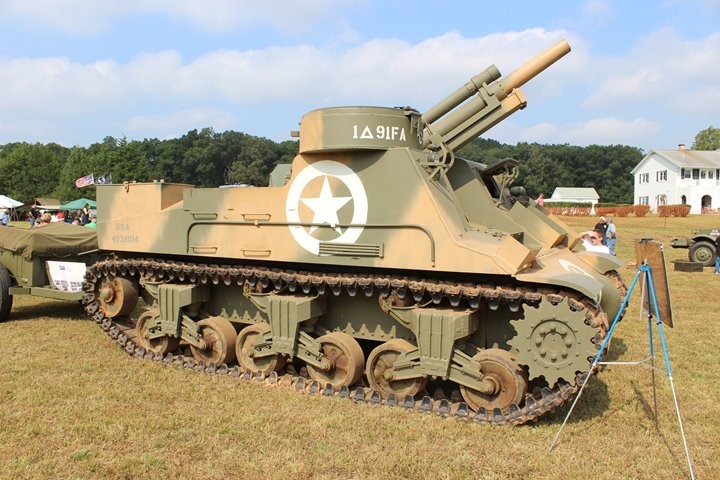
The M7 105mm self-propelled gun carriage was
powered by the Continental R-975 radial engine. Delco-Remy provided
six different models of cranking motors for radial engines on armored
vehicles during World War Two. Author's photo added May 1,
2020.
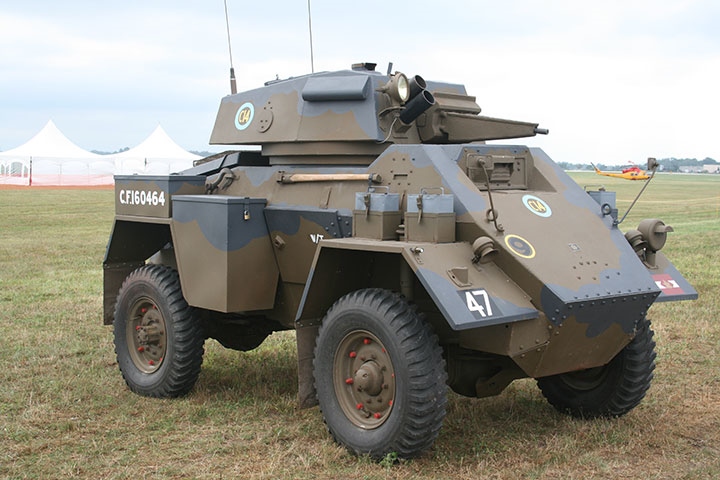
The Fox Armored Car was designated as a GM
MK.1 but Chevrolet was the Division that designed the chassis.
Final assembly was done by GM of Canada. The engine was a GMC 270
engine with Delco-Remy cranking motor, distributor and coil, and D-C
generator with voltage regulator. Canadian Forces operated the Fox
at Normandy. Author's photo added May 1, 2020.
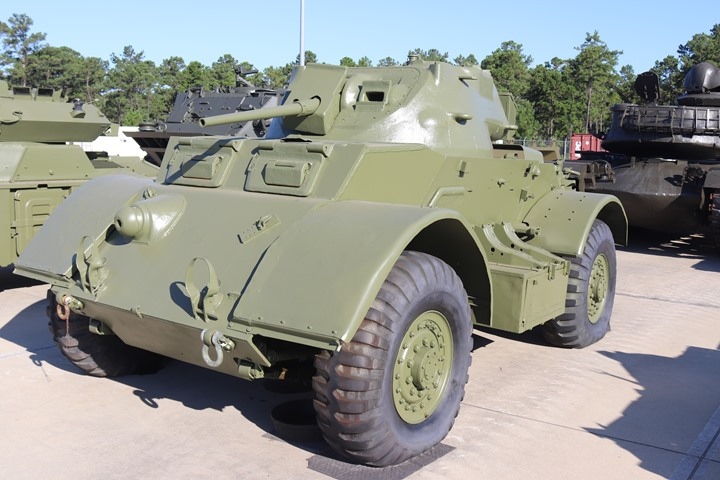
Chevrolet designed and built the
Staghound armored car used by the British and Canadians.
Interestingly, Chevrolet used two GMC 270 engines to power it with two
sets of Delco-Remy electrical components. Author's photo added May
1, 2020.
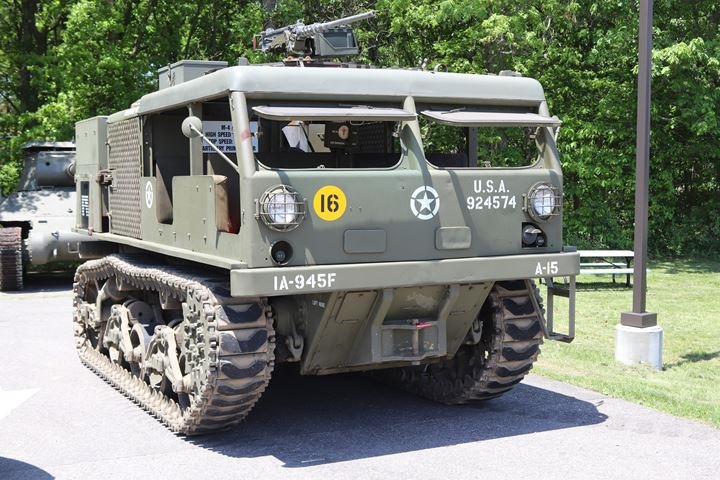
The Allis-Chalmers M4 high speed tractor was
powered by a Waukesha 145GZ engine which had a Delco-Remy 644 heavy duty
rear reduction cranking motor. Author's photo added May 1, 2020.
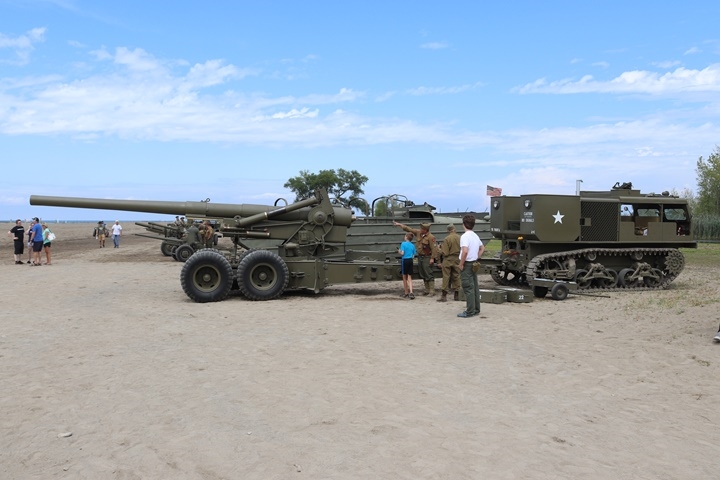
The M4 high speed tractor was a prime mover
for heavy artillery that came ashore in support of the infantry.
Author's photo added May 1, 2020.
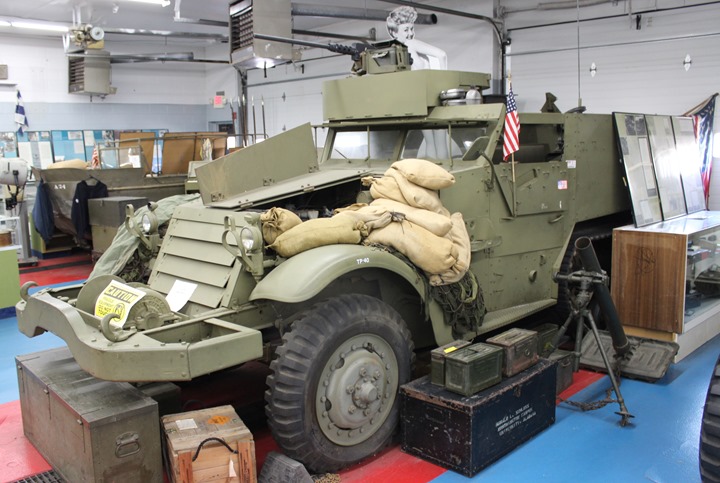
Last, but not least, are the armored half-tracks at Normandy, powered by White 160AX
engines. There were fourteen different models of the half-track
built by three different companies that were at Normandy. It was a
true utility vehicle and weapon used by all the forces that landed and
operated at Normandy. The Diamond T M3A1 shown here is a
representative sample of all the various types. Author's photo
added May 1, 2020.
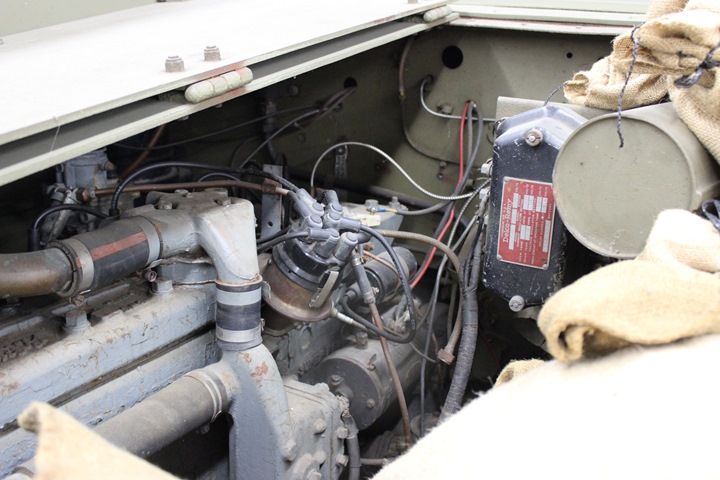
In the engine bay of the M3A1 are a
Delco-Remy distributor, coil, D-C generator, and voltage regulator.
Author's photo added May 1, 2020.
Trucks: There were a myriad of
trucks built a number of manufacturers at Normandy. Only the GMC CCKW 2-1/2 ton truck and its amphibious derivative, the DUKW, had
Delco-Remy components. That being said, the GMC was the mainstay
of the U.S. Army's medium truck and was the workhorse hauler of supplies
not only at Normandy, but all through the European campaign.
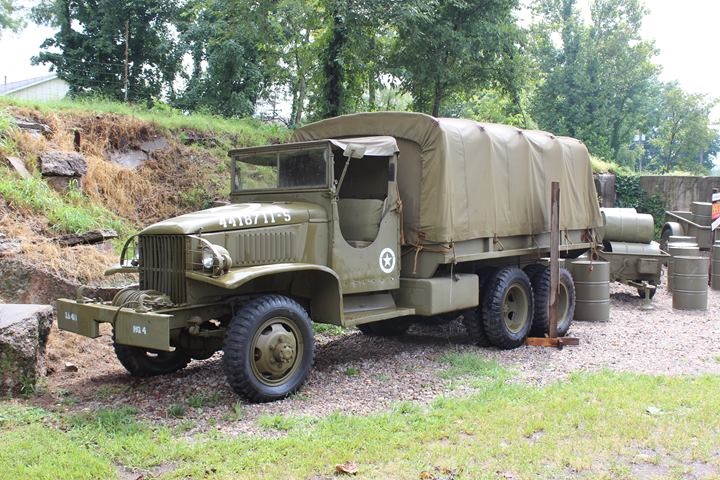
The classic GMC CCKW 2-1/2-ton cargo truck was the most common of the type
truck at Normandy. The GMC 270
came with a complete set of Delco-Remy electrical equipment.
Author's photo added May 1, 2020.
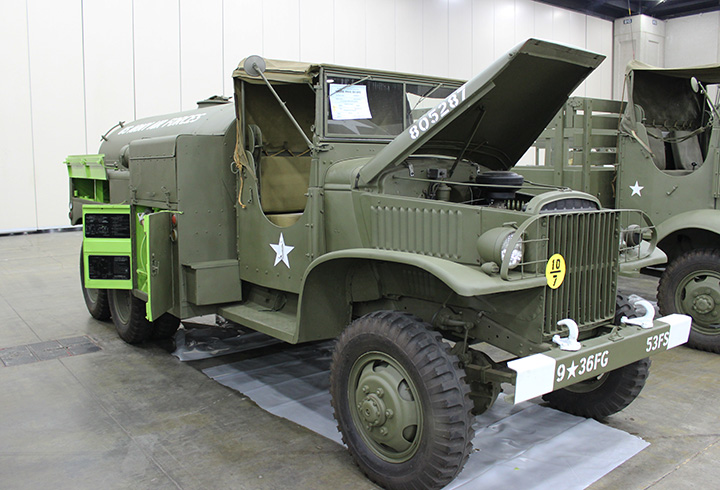
Also supporting the D-Day aircraft operations
would be GMC 2-1/2-ton fuel trucks such as this one. There were a
variety of CCKW trucks built during the war. Photo
added to website on July 1, 2014.
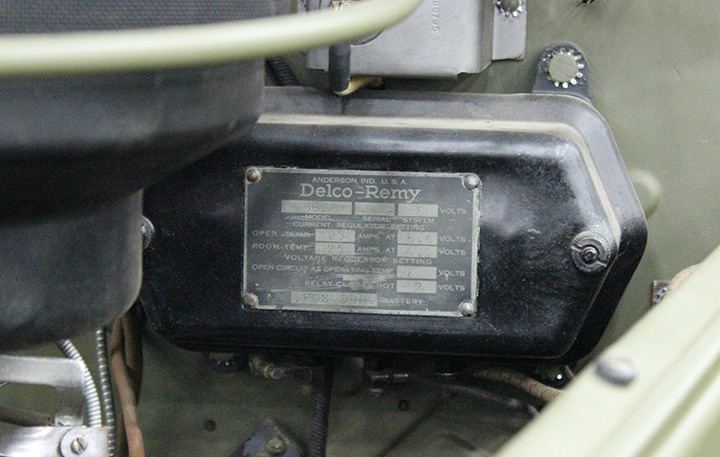
Inside the engine bay of the GMC is a Delco-Remy 6-volt regulator.
This is model number 5628 and serial number 56554. Author's photo.
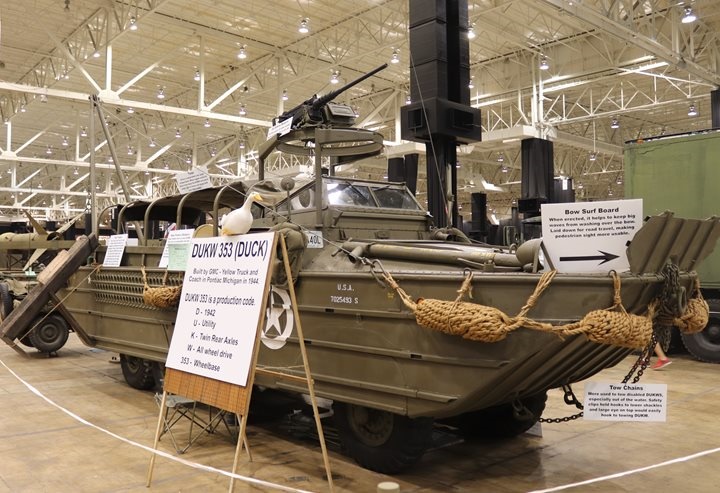
The amphibious GMC DUKW with its Delco-Remy
electrical system optimized for marine operation was instrumental in
bringing supplies directly from transport ships across the water and
beach. It was then able to drive directly inland to the troops that
needed the supplies. Author's photo added May 1, 2020.
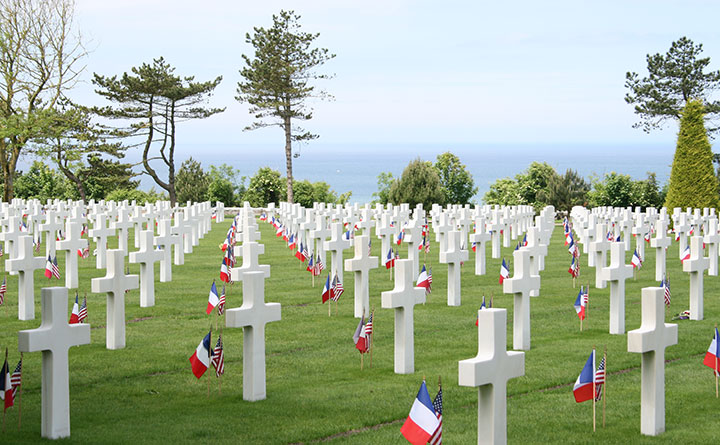
No battle or war is without its costs. The American Cemetery over
looking the Normandy Beach is known as "Bloody Omaha". One
out of every 18 Americans who landed on the Normandy beaches or
parachuted into the areas behind the beaches on June 6, 1944 was killed.
Many of them were laid to rest in this cemetery. The author's
photo was taken on Memorial Day, 2008.
|
























-fortbenning-2018-107w-1.jpg)














